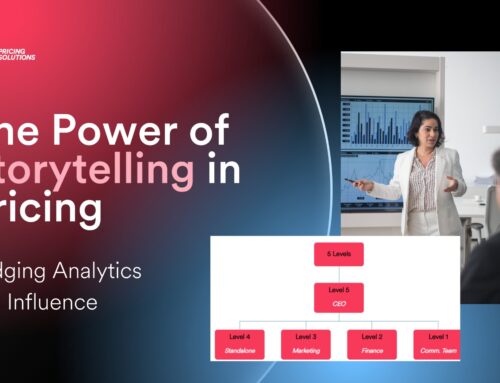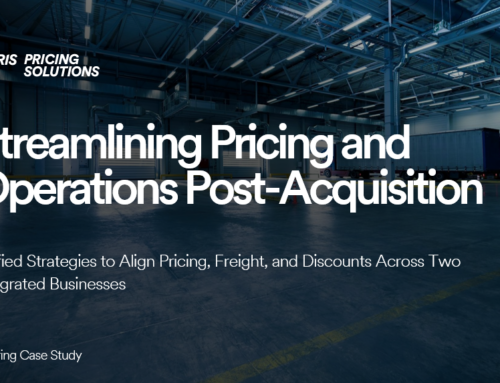Why Leading Firms Are Rethinking the Role of Discounting in 2025
In times of uncertainty, discounting is often the fastest lever companies reach for to protect volume. It’s immediate. It’s measurable. And when volume slows, it can appear to be the most direct path to recovery.
But discounting is not a strategy. It is a tactic – and a dangerous one when overused.
At Iris Pricing Solutions, we work with companies across industries and maturity stages. One recurring pattern we’ve seen, particularly in firms between $50 million and $500 million in annual revenue, is a structural over-reliance on discounting. It begins as a reasonable tradeoff and gradually becomes a hidden tax on growth.
This article explores how discounting evolves from necessity to liability, the warning signs leaders often miss, and the pricing disciplines high-performing companies are building instead.
The Discount Lifecycle: From Justified to Dangerous
Discounting doesn’t begin as a problem. In fact, in early-stage environments, it’s a pragmatic survival tactic.
- Startups and emerging businesses use discounts to build demand. At this stage, nearly any revenue is considered a win – even if margins are negative – because the goal is to prove market viability.
- Mid-market firms, typically between $25 million and $100 million, begin using promotions and volume-based incentives to fuel growth. The logic is straightforward: lower prices drive more sales…but at the cost of margins.
- But once firms cross the $100 million threshold, the calculus changes. Companies often find themselves discounting not just to attract new business, but to retain existing accounts. At this stage, discounting shifts from a growth lever to a margin liability with revenues often increasing and bottom line profits staying flat or, worse, declining. These companies are “buying growth.”
Many companies fail to adjust. The result is a slow erosion of value, profitability, and pricing power – often without realizing it’s happening.
Three Consequences of Excessive Discounting
1. Commoditization Through Competitive Matching
Discounting offers no sustainable competitive advantage. Once a price cut is made public – especially in commoditized industries – competitors can replicate it instantly. The result? Price becomes a zero-sum game. Margin erodes across the category, and no one gains real share.
2. Erosion of Price Credibility
When discounts are frequent or predictable, customers begin to see list prices as artificial. Price integrity is lost. In industries where promotions are perpetual – think mid-market retail – discounts cease to function as an incentive and become the default expected price.
3. Self-Reinforcing Price Wars
Uncontrolled discounting creates a race to the bottom. As one company drops price to defend or gain share, others follow suit to maintain their own position. These cycles, once started, are difficult to unwind – and often end with multiple players worse off than before, including customers who lose stable suppliers and likely also investment in innovation. As our President, Kirk Jackisch, has observed, “It’s often a Pyrrhic victory. You may win the deal, but lose long-term profitability and enterprise value.”
Why Companies Stay Trapped
The most common rationalization for discounting is deceptively simple: “We need to hit volume numbers.”, but the right diagnostic question is not about volume. It’s about share.
When clients approach Iris Pricing Solutions seeking help with pricing or margin recovery, we ask: “What’s happening to your share?”
- If your share is flat or growing, discounting is likely going to be harmful.
- If your volume is down, but competitors’ volume is also down, the issue may be cyclical or structural, not price-driven.
The Alternative: Pricing with Intention
Discounting has a role. But it must be targeted, limited, and defensible.
- Targeted: applied to specific segments, behaviors, or acquisition objectives – not offered broadly as a default lever.
- Limited: structured with clear timeframes, thresholds, and fences.
- Defensible: designed with a clear path to pull pricing back up – without degrading perceived value or triggering contract resets.
The goal is not to eliminate discounting altogether. It’s to reposition it as a deliberate, controlled instrument within a broader pricing strategy.
Building a Pricing Function That Resists Defaulting to Discounts
The firms that recover pricing power – and maintain it – share a few common traits:
1. Cross-functional alignment on value
2. Clarity on price governance
3. Capability-building across commercial teams
These companies don’t just price differently. They think differently – embedding pricing into strategic planning rather than treating it as a post-hoc adjustment.
Final Thought: Don’t Let Short-Term Tactics Undermine Long-Term Strength
The instinct to discount is understandable. But in a market environment where pricing power is increasingly a source of competitive advantage, short-term concessions can compromise long-term resilience.
As we often tell our clients, your price is a reflection of your story.
If you tell a story that your product or service isn’t worth full price, eventually – your customers will believe you.
Let’s Talk: If your organization is facing margin pressure or discount fatigue, Iris Pricing Solutions offers a Pricing Power Diagnostic to assess where value leakage is occurring – and how to restore strategic control.









